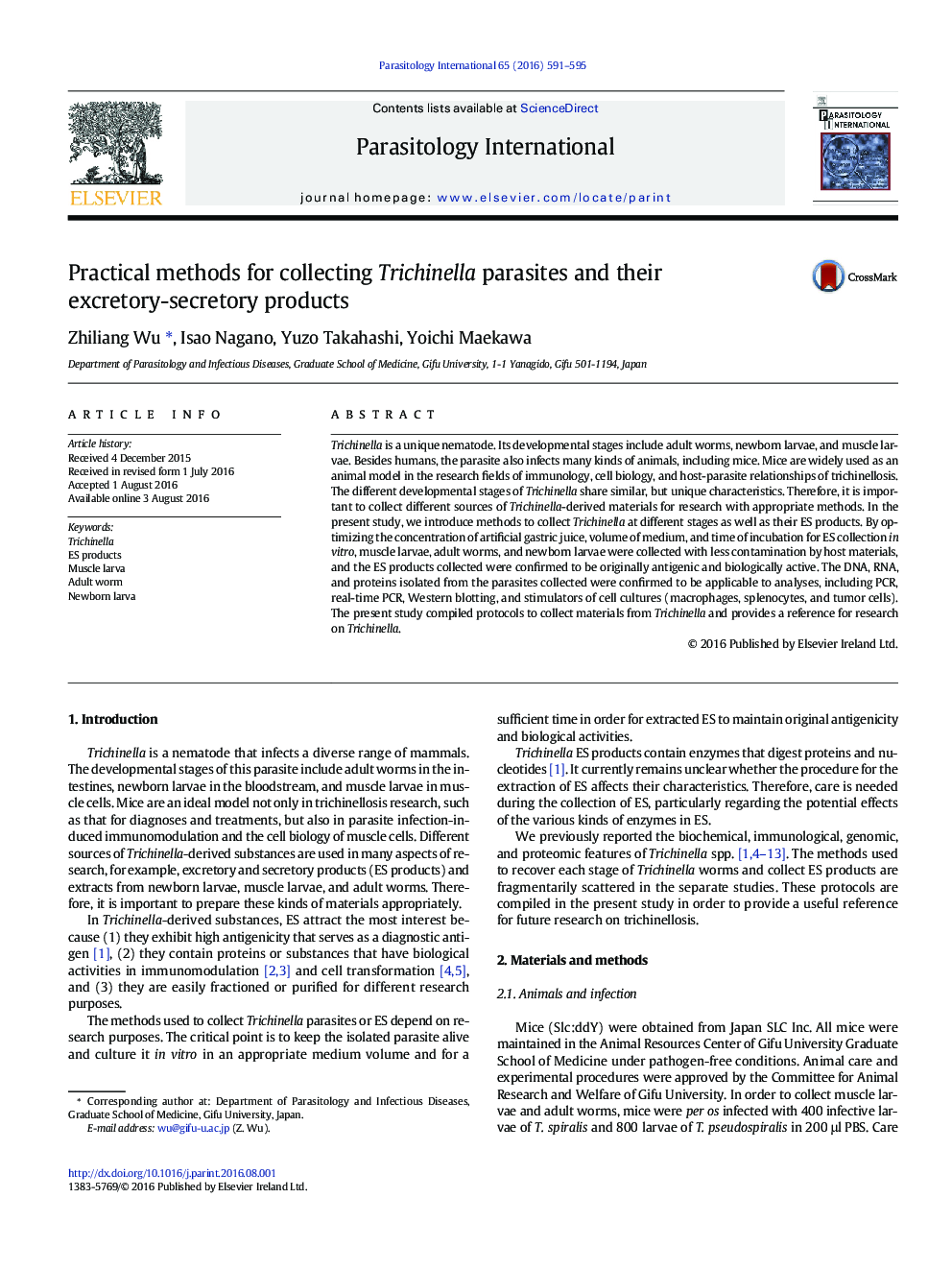| Article ID | Journal | Published Year | Pages | File Type |
|---|---|---|---|---|
| 5674148 | Parasitology International | 2016 | 5 Pages |
â¢Methods to collect Trichinella and their ES products were modified.â¢Collected parasites were confirmed to be applicable in various kinds of analysis.â¢Modified methods are proposed as reference in Trichinella research.
Trichinella is a unique nematode. Its developmental stages include adult worms, newborn larvae, and muscle larvae. Besides humans, the parasite also infects many kinds of animals, including mice. Mice are widely used as an animal model in the research fields of immunology, cell biology, and host-parasite relationships of trichinellosis. The different developmental stages of Trichinella share similar, but unique characteristics. Therefore, it is important to collect different sources of Trichinella-derived materials for research with appropriate methods. In the present study, we introduce methods to collect Trichinella at different stages as well as their ES products. By optimizing the concentration of artificial gastric juice, volume of medium, and time of incubation for ES collection in vitro, muscle larvae, adult worms, and newborn larvae were collected with less contamination by host materials, and the ES products collected were confirmed to be originally antigenic and biologically active. The DNA, RNA, and proteins isolated from the parasites collected were confirmed to be applicable to analyses, including PCR, real-time PCR, Western blotting, and stimulators of cell cultures (macrophages, splenocytes, and tumor cells). The present study compiled protocols to collect materials from Trichinella and provides a reference for research on Trichinella.
Graphical abstractDownload high-res image (147KB)Download full-size image
